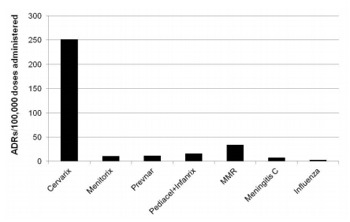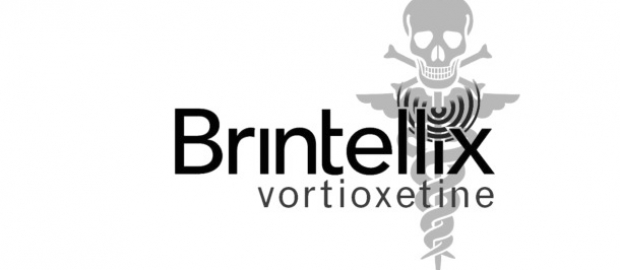Featured
Gardasil: Evidence of Immense Harm
The implementation of Gardasil and Cervarix vaccination programs is entirely irrational. A recent study investigated their safety claims and found them sorely lacking. These vaccines are causing devastating harm.
As stated in a previous article, the authors need to be circumspect in their writing—but I don’t. I will try to clarify when expressing my views.
As described in two previous articles1,2, the HPV vaccines, Gardasil and Cervarix, provide little or no protection against precancerous cervical lesions, and by extension, little to no benefit against cervical cancer. That alone should result in removing them from the market. However, the picture grows even murkier when safety data is also factored in.
Researchers Tomljenovic, Spinosa, and Shaw also investigated adverse effects associated with Gardasil and Cervarix3. What they reveal leaves one to wonder about the legitimacy of government agencies that have approved them. They state:
Given that it is unlikely that HPV vaccination would decrease the already low incidence of cervical cancers in developed countries with good Pap screening practices, any expected benefit from HPV vaccines will be significantly limited in such settings. Accordingly, the risk-to-benefit balance associated with HPV vaccination will then also become less favourable.
NOTE: Citations in this, and later, quotations from the study have been removed for clarity.
My translation of this statement: In light of their study’s findings about the lack of efficacy in both Gardasil and Cervarix, there can be no justification in any risks from these vaccines. If there’s only minor benefit, then only minor risks can be tolerated. If there’s no benefit—and these vaccines cannot demonstrate any benefit at this time—then these vaccines cannot be justified.
Vaccine Adverse Events Reports
In reviewing the Vaccine Adverse Events Reporting System (VAERS), they state:
Notably, compared to all other vaccines given to females aged 6 to 29 years (the target group for HPV vaccines), Gardasil and Cervarix alone were associated with over 60% of all serious ADRs (including 63.8% of all deaths and 64.8% of all life-threatening reactions). Moreover, 82% cases of permanent disability in females under 30 years of age were also attributed to HPV vaccines.
Those are highly significant figures. A single vaccine is responsible for 63.8% of all reported VAERS-reported deaths and 82% of VAERS-reported permanent disabilities. These vaccines are mostly given only to girls and young women, well under half the population—yet they’re responsible for well over half of the vaccine-related deaths and the vast majority of permanent disabilities!
It can be suggested that reports of adverse events to VAERS carries little meaning because it’s a passive system, reliant on the observations of those who choose to make reports. However, the nature of the reports is consistent as to types of reactions and it’s impossible to ignore the huge increase in number of reports associated with Gardasil and Cervarix.
Further, these reports are consistent across countries. In the United Kingdom, which initially standardized to Cervarix, the number of adverse events was 24-to-104 times higher than for any other vaccine. In Australia, since the introduction of the HPV vaccines, the rate of vaccine-related adverse events has seen an 85% increase.
 Take a look at the graph to the right, which Tomljenovic et al provided in their study. It shows the relative rates of adverse effects reported for Cervarix and six other vaccines. As they say, a picture is worth a thousand words.
Take a look at the graph to the right, which Tomljenovic et al provided in their study. It shows the relative rates of adverse effects reported for Cervarix and six other vaccines. As they say, a picture is worth a thousand words.
The nature of the adverse events reported is consistent. Autoimmune and nervous system disorders make up the bulk of them.
Safety Trials
The researchers also looked at the pre- and post-licensure data that supposedly support the HPV vaccines’ safety. What they found should give pause to any suggestions that Gardasil and Cervarix are safe.
Both Merck, Gardasil’s manufacturer, and GSK, Cervarix’s manufacturer, used aluminum adjuvants in their “placebos”. My comment: Since aluminum is a noted neurotoxin, it seems rather obvious that the term placebo had no legitimate meaning in those trials, leaving the safety of the vaccines in serious doubt.
Gardasil’s own package insert data shows that 2-5 times more injection site adverse effects occur from aluminum adjuvant as compared to saline injections. Therefore, Merck’s own data demonstrates that we can expect a significant number of adverse effects from the aluminum adjuvant alone. Nonetheless, they combined “placebo” groups that had gotten only saline with ones that had gotten an aluminum adjuvant. Tomljenovic, Spinosa, and Shaw describe the results:
The outcome of this procedure was that Gardasil and the aluminum “control” group had exactly the same rate of serious ADRs (2.3%). Thus at best, Gardasil was shown
to be as safe as its potentially neuroimmunotoxic constituent aluminum.
That is, for little or no benefit, girls and women who are injected with Gardasil are at risk of serious adverse effects from the vaccine—and that is according to Merck’s own data!
Cervarix also utilized the AS04 adjuvant, which includes squalene, the constituent of anthrax vaccines at issue in Gulf War Syndrome’s autoimmune disorders. Interestingly, the authors of a study on whether autoimmune disorders are a concern in Cervarix stated that they found no such association, although they also stated, “It is important to note that none of these studies were set up primarily to study autoimmune disorders.” This is more than a little questionable, since the title of the study says that was its purpose! Our researchers fairly gently stated:
Given that vaccines can trigger autoimmune disorders, a more rigorous safety assessment than that provided by the GSK-sponsored study would appear to have been warranted.
But I can be stronger than that: At a minimum, this borders on fraud. To set up a study that is supposed to find if autoimmune disorders are a concern, that study must be designed to find them. Yet GSK-sponsored studies that were not designed to find autoimmune disorder were presented as demonstrating that autoimmune disorders are not a concern. You can decide whether to trust such reports.
In terms of whether the risks of Cervarix can be justified in terms of its benefits, the authors state:
The safety outcomes in the TVC cohort of this trial [phase III PATRICIA trial] however showed that out of over 9000 women in the vaccine group, 8% reported a serious event (the same rate of serious ADRs as that obtained from the U.S. VAERS), 32% reported a medically significant condition (defined as an ADR that prompted a visits to the ER or to the physician), 9% reported a spontaneous abortion and 3% reported a new-onset chronic disease. …
… The only fact clear from these observations is that the true evidence of Cervarix safety remains concealed by the use of a potentially toxic pseudo-placebo. On the other hand, the only demonstrated benefit from Cervarix in the same trial consisted of 0.24% reduction in HPV-16/18 related CIN 3+ lesions, and a 1.05% reduction in a number of cervical excision procedures in the TVC-naive cohort.
The benefit shown in the study was minimal, so small as to be questionable about whether any benefit is provided. 8% of the subjects reported a “serious event”, 32% reported a “medically significant condition”, 9% had spontaneous abortions, and 3% developed chronic conditions! These results were used to show that Cervarix was safe! How much harm must a vaccine do before it’s refused approval? (Oh, this was my own statement of the implication—just in case you couldn’t tell.)
The authors found points of concern in studies about Gardasil’s safety. No consideration was given for whether a subject had received one, two, or three Gardasil vaccines. Those who’d had fewer than the full series will likely give an impression of safety that doesn’t exist. Merck’s Safety Review Committee reviewed the data for autoimmune risks. It consisted of people whose specialties were not related to that focus. Just how did they expect them to note such disorders—or was that the point?
The mind reels!
Cost Effectiveness Analyses
Our researchers went on to look at cost effectiveness analyses, those statistical exercises done to examine whether it’s financially prudent to purchase and implement a plan, in this case, HPV vaccinations. The researchers phrase the issue as “Can HPV Vaccination Add Value to Existing Screening Programs?” That is, of course, the real concern. HPV vaccines do not lessen the screening required to manage cervical cancer. Therefore, they need to add value to it.
They provide a table of ten different analyses, their assumptions in making cost-benefit conclusions, and their conclusions. They point out these assumptions:
- Vaccine efficacy of 95-100% against HPV-16/18.
- Lifelong protection from a series of three vaccinations.
- No decrease in life quality as a result of the vaccination.
- High vaccination coverage of pre-adolescent girls.
As is obvious from the previous two articles and this one, none of the first three assumptions is valid. As the authors point out, number 4 is also an invalid assumption, as vaccine uptake has been far from universal. They describe their concerns with a question:
[I]s it rational that vaccine policy decisions be based on conclusions derived from an uncritical acceptance of flawed estimates on vaccine safety and long-term protective efficacy?
Your author is speaking here, not the researchers: Obviously, it is not rational. And that’s what’s quite clear about the implementation of HPV vaccines: It is entirely irrational. They are ineffective in preventing cervical cancer. Worse, they are exceedingly expensive, both in terms of money and destruction of lives and quality of life.
It’s quite clear that the public’s welfare, in particular that of young girls who haven’t even reached adulthood, is of little value to the promoters of Gardasil and Cervarix. If the true cost of a vaccine is the loss of health and well-being of those who are expected to use it, then their health and well-being are devalued when it interferes with the profit interests of their masters, the pharmaceutical corporations. (Of course, this last paragraph is the author’s conclusion.)
Sources:
Tagged big pharma, cervarix, cervarix adverse effects, gardasil, gardasil adverse effects, hpv vaccines adverse effects, pharmaceutical drugs, pharmaceuticals, science, shaw, spinosa, tomljenovic, vaccine, vaccines















Pingback: Beyond Prop. 37 : Corporations in collusion with the state of California, deem that parents do not have the right to know what enters their child’s body, GMO’s and poisons in vaccines. « Family Survival Protocol
Pingback: Aluminum Adjuvant Blasts Genetics to Make AutismGaia Health
Pingback: Teorema
Pingback: Scientists Point Out Corruption in Vaccine's Promotion – Waking Times : Waking Times
Pingback: cascading failure
Pingback: simply click the following internet page
Pingback: More inspiring ideas
Pingback: mouse click the up coming post
Pingback: relevant site
Pingback: similar site
Pingback: simply click the following post
Pingback: simply click
Pingback: simply click the following internet site
Pingback: simply click the next website
Pingback: simply click the up coming website page
Pingback: visit the next website
Pingback: simply click the up coming web site
Pingback: supplemental resources
Pingback: Read Far more
Pingback: Suggested Internet page
Pingback: visit the next page
Pingback: please click the following webpage
Pingback: visit the next web page
Pingback: Read the Full Piece of writing
Pingback: Recommended Site
Pingback: related webpage
Pingback: similar web page
Pingback: similar resource site
Pingback: simply click the following post
Pingback: simply click the up coming website page
Pingback: simply click the next document
Pingback: Suggested Resource site
Pingback: simply click the up coming web site
Pingback: mouse click the next article
Pingback: Suggested Online site
Pingback: visit the up coming article
Pingback: our website
Pingback: please click the up coming article
Pingback: click the next document
Pingback: Read Even more
Pingback: click the up coming post
Pingback: Read Significantly more
Pingback: click through the following article
Pingback: click through the following post
Pingback: click through the next post
Pingback: mouse click the following website page
Pingback: related web-site
Pingback: Click Here
Pingback: Ongoing
Pingback: click the following document
Pingback: please click the up coming website page
Pingback: please click the up coming post
Pingback: Read Alot more
Pingback: click the following page
Pingback: Highly recommended Reading
Pingback: simply click the up coming document
Pingback: Read This
Pingback: Recommended Internet page
Pingback: This Resource site
Pingback: just click the next post
Pingback: Recommended Studying
Pingback: Recommended Web page
Pingback: just click the up coming internet page
Pingback: click through the up coming document
Pingback: visit the next internet site
Pingback: visit the next website
Pingback: similar website
Pingback: simply click the following webpage
Pingback: simply click the next website page
Pingback: click the following webpage
Pingback: source for this article
Pingback: Suggested Studying
Pingback: Click This Link
Pingback: click through the following website
Pingback: source
Pingback: This Web-site
Pingback: This Webpage
Pingback: Get More Info
Pingback: visit the following web site
Pingback: Suggested Web page
Pingback: visit the following web site
Pingback: visit the up coming site
Pingback: visit the up coming internet site
Pingback: Going Listed here
Pingback: This Webpage
Pingback: visit the next post
Pingback: internet site
Pingback: click the following internet page
Pingback: Click On this website
Pingback: click the next post
Pingback: Get the facts
Pingback: just click the next site
Pingback: just click the up coming internet site
Pingback: Click This Link
Pingback: click the up coming webpage
Pingback: click through the following post
Pingback: just click the following web site
Pingback: click through the next site
Pingback: click through the up coming internet page
Pingback: click through the up coming web page
Pingback: click through the up coming web site
Pingback: Discover More Here
Pingback: More Signup bonuses
Pingback: Full Review
Pingback: Full Guide
Pingback: Going At this website
Pingback: More Help
Pingback: Get the facts
Pingback: similar resource site
Pingback: Highly recommended Internet page
Pingback: Going to
Pingback: mouse click the next article
Pingback: mouse click the next site
Pingback: just click the following internet site
Pingback: mouse click the up coming website
Pingback: Suggested Internet site
Pingback: Learn Alot more
Pingback: Learn Alot more Here
Pingback: please click the up coming website page
Pingback: linked resource site
Pingback: linked web-site
Pingback: simply click the up coming document
Pingback: Read the Full Document
Pingback: More methods
Pingback: Read the Full Piece of writing
Pingback: relevant website
Pingback: relevant website
Pingback: relevant website
Pingback: simply click the following site
Pingback: simply click the next site
Pingback: visit the following website
Pingback: sources
Pingback: visit the next web site
Pingback: simply click the next document
Pingback: stay with me
Pingback: Suggested Browsing
Pingback: This Resource site
Pingback: This Webpage
Pingback: visit the following web page
Pingback: visit the up coming internet site
Pingback: visit the next web page
Pingback: article source
Pingback: Click On this site
Pingback: click the following website
Pingback: click the up coming internet site
Pingback: mouse click the next page
Pingback: click through the following web page
Pingback: click through the next web site
Pingback: click through the up coming web site
Pingback: please click the following page
Pingback: Full Content
Pingback: our website
Pingback: Full Statement
Pingback: Read Even more
Pingback: Highly recommended Site
Pingback: please click the up coming website page
Pingback: please click the up coming website page
Pingback: just click the following web site
Pingback: Read Far more
Pingback: Related Site
Pingback: Learn Even more Here
Pingback: Read the Full Guide
Pingback: similar resource site
Pingback: More methods
Pingback: resource for this article
Pingback: similar webpage
Pingback: simply click the next internet site
Pingback: simply click the following page
Pingback: Recommended Resource site
Pingback: simply click the next document
Pingback: Suggested Browsing
Pingback: Suggested Studying
Pingback: Suggested Web site
Pingback: This Web site
Pingback: visit the next page
Pingback: visit the next site
Pingback: visit the up coming document
Pingback: simply click the following internet site
Pingback: Click At this website
Pingback: simply click the following page
Pingback: click the following internet page
Pingback: simply click the next site
Pingback: click the next site
Pingback: mouse click the following website page
Pingback: mouse click the next site
Pingback: click the up coming site
Pingback: please click for source
Pingback: please click the following website
Pingback: click through the following page
Pingback: Suggested Looking at
Pingback: click through the next post
Pingback: Read More Here
Pingback: click through the up coming webpage
Pingback: This Site
Pingback: Read Much more
Pingback: Full Content
Pingback: Read the Full Post
Pingback: related webpage
Pingback: visit the following web site